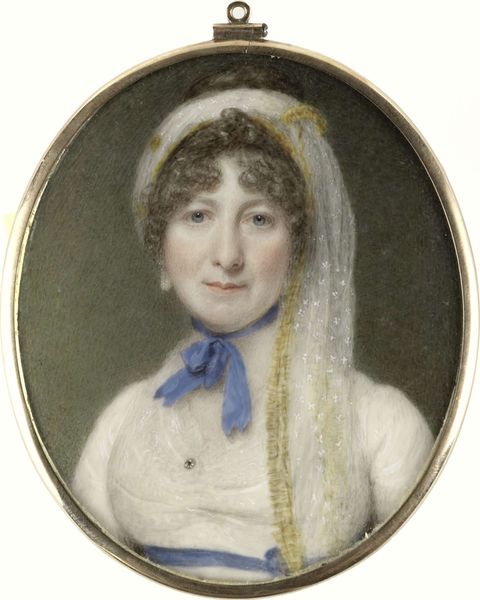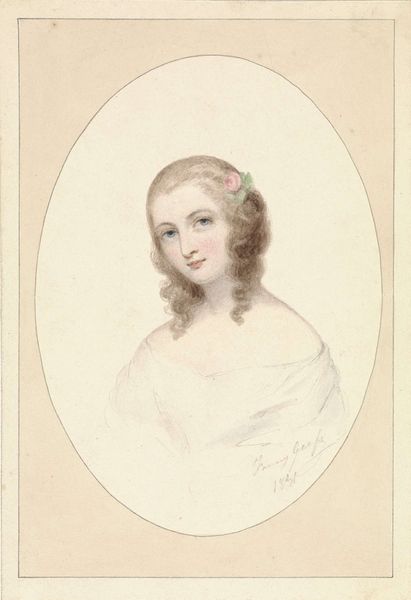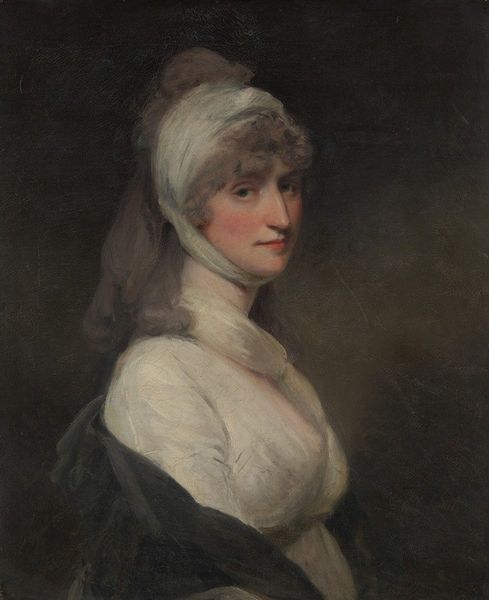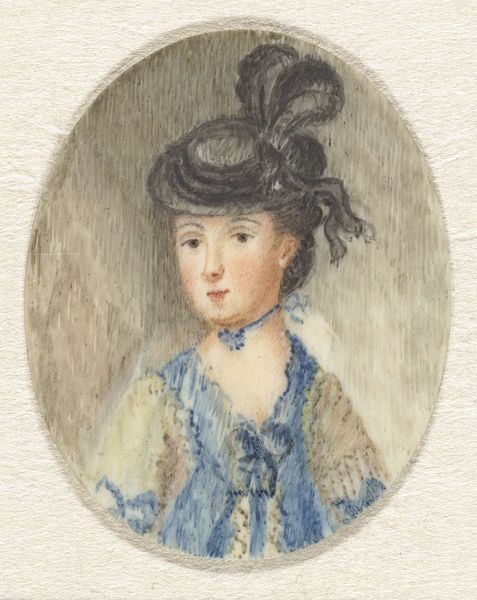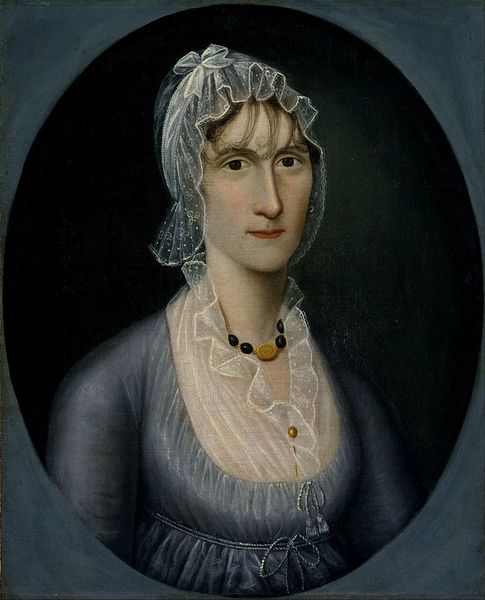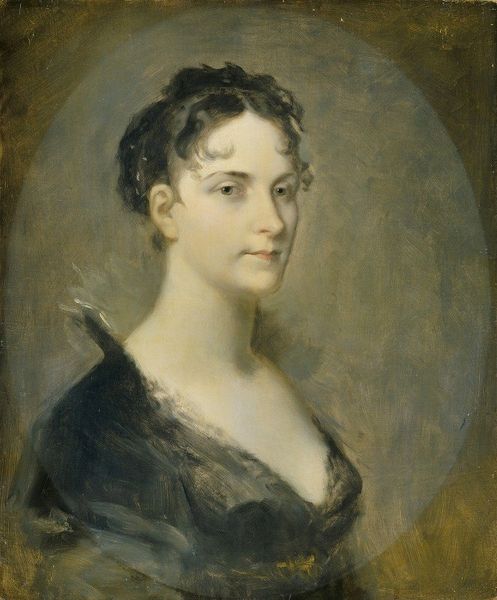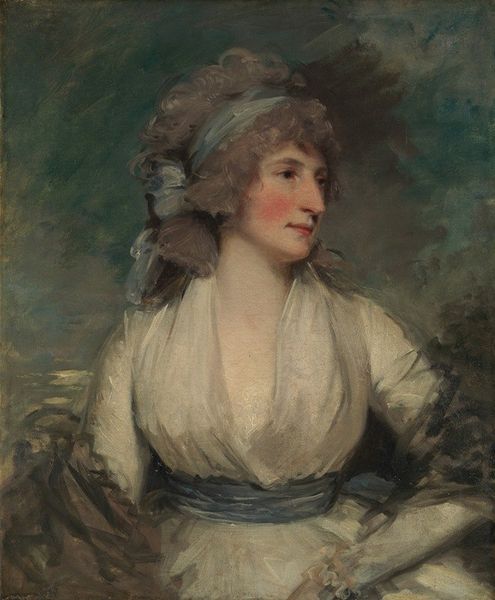
Portret van een jonge vrouw, driekwart naar rechts 1786 - 1839
0:00
0:00
watercolor
#
portrait
#
watercolor
#
intimism
#
romanticism
#
miniature
#
watercolor
Dimensions: height 75 mm, width 59 mm
Copyright: Rijks Museum: Open Domain
Curator: This delightful miniature is titled "Portret van een jonge vrouw, driekwart naar rechts", or "Portrait of a Young Woman, Three-Quarters to the Right," crafted by Pieter Gerardus van Os sometime between 1786 and 1839. Its delicate composition employs watercolor to capture a soft and intimate portrayal. Editor: My initial impression is one of gentle serenity. The soft blues and whites lend the work a certain tranquility; almost like looking into a peaceful dream. The oval shape focuses attention, inviting close observation. Curator: Precisely. The limited palette works wonders to maintain a soft, consistent tonality. The artist has utilized a meticulous stippling technique, layering tiny dots of watercolor to achieve subtle gradations in tone and form. Look particularly at the rendering of the skin. Editor: It's fascinating how such small portraits like these were both intimate and displayed objects within a specific socio-economic setting. In a world before photography, owning and displaying this miniature asserted status and taste within emerging mercantile and bourgeois cultures of the time. Were these items often commissioned for a fee? Curator: Undeniably. Their precious materials and the time invested in them signaled both status and an interest in what might now be termed "interior decor." Moreover, consider how intimate it was to give or receive. Editor: You're correct, this was a unique type of intimacy that perhaps photography usurped later, as you noted before. It will be curious to learn whether these intimate aesthetic items of material culture would survive these transitions. I like it more now that I'm considering this broader history of art. What a treasure! Curator: Indeed. By investigating its material construction alongside a specific period, we gain new, unexpected vantage points on portraiture as both art and object. I see the benefits now, too.
Comments
No comments
Be the first to comment and join the conversation on the ultimate creative platform.
